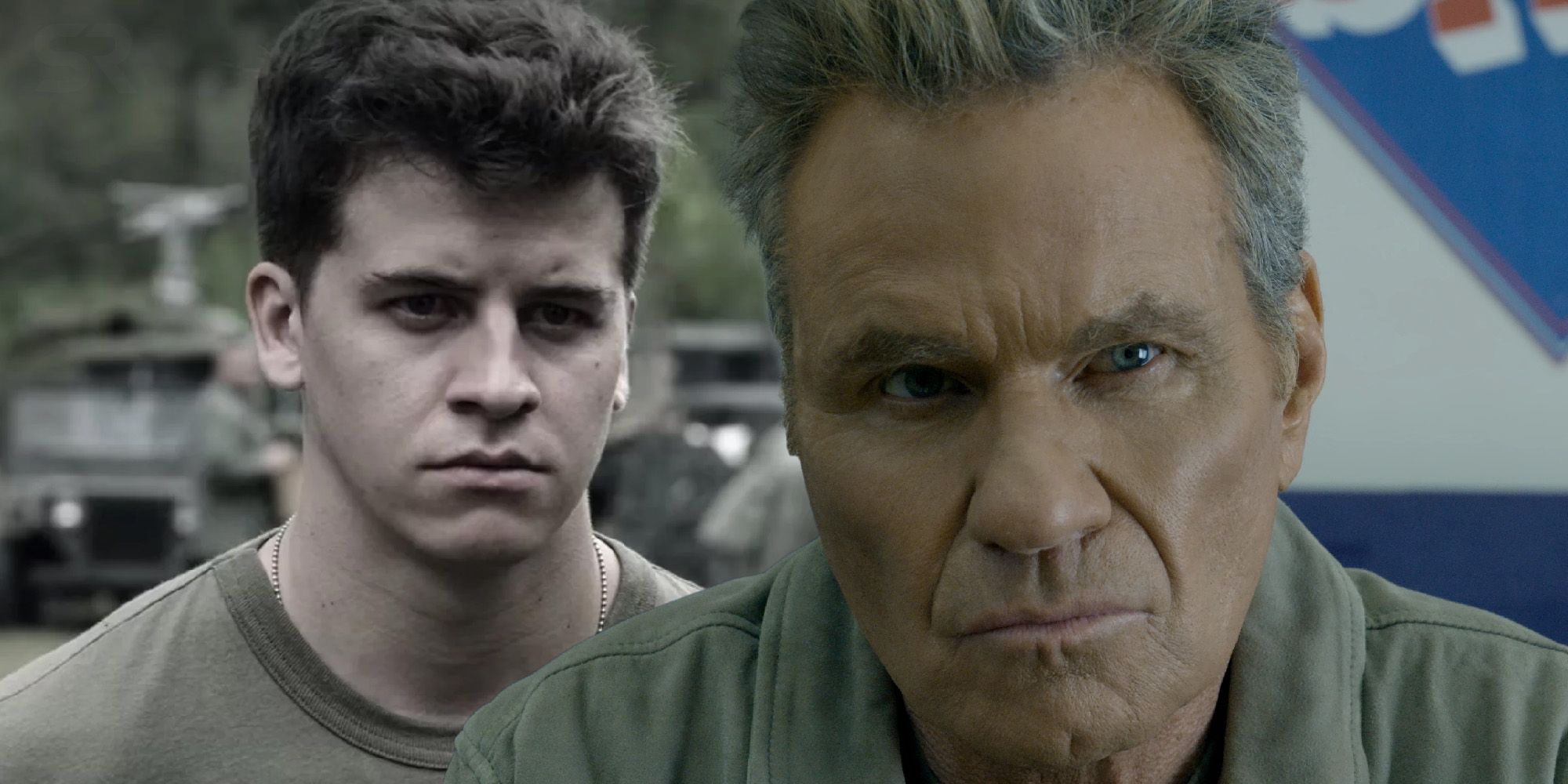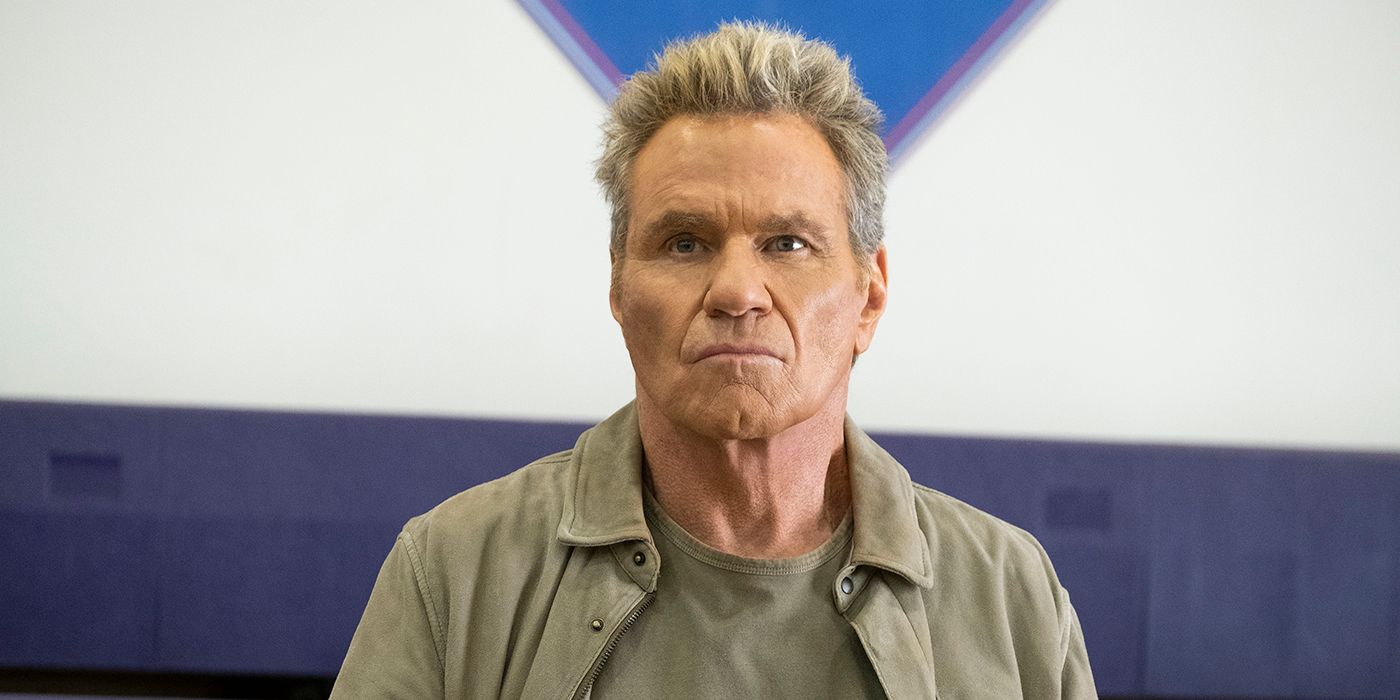Cobra Kai delivered a much-needed and fitting origin story for Kreese (Martin Kove) in season 3. Kreese is one of the central antagonists of The Karate Kid franchise, and is arguably the villain who has caused the main characters the most trouble in both the trilogy and the shows.
Kreese, the character who created Cobra Kai and turned Johnny (William Zabka) into a bully, returned to the spotlight in a shocking cliffhanger in the season 1 finale. After pretending to be on the road to redemption, he showed his true colors in the season 2 finale and took the reins of Cobra Kai from Johnny. Throughout season 3, Kreese has continued to mold the Cobra Kai students into aggressive and ruthless fighters who reflect his own values. The threat that he poses is so great that he’s even pushed Johnny and Daniel – who have drastically different approaches to karate – into forming an alliance between their two dojos.
Over the course of the season, Cobra Kai has gradually told Kreese’s origin story through flashbacks of his early life, particularly his time as an American soldier in the Vietnam War. Given how integral a character he is to both the show and the franchise as a whole, it was naturally important that if Cobra Kai were to give him a detailed backstory, it needed to feel right for his character. Season 3 did in fact achieve this, because the story it told properly explained how Kreese became the person that he was.
Kreese’s origin got off to a good start before it even got to his Vietnam War days. Showing him getting attacked by bullies hinted at the ideas that Kreese would develop about the need to be strong. Encounters with people like them gave Kreese a reason to put himself in a position where he couldn’t be bullied. Later, the Cobra Kai flashbacks transitioned to the war and introduced Captain Turner (Terry Serpico), Kreese’s superior officer. As a career soldier with a “tough guy” persona, an unyielding expectation of excellence, and a belief that the ends justify the means, Turner certainly felt like the perfect choice to be Kreese’s mentor. It was easy to believe that under the influence of someone like him, a young Kreese could evolve into the heartless sensei that preaches the Cobra Kai dojo mantra “Strike Hard. Strike Fast. No Mercy” in The Karate Kid and Cobra Kai.
It wasn’t until the end of the season that Cobra Kai completed the puzzle and revealed why Kreese is such a cold person. Kreese volunteers for a fight to the death with Captain Turner in a POW camp in order to spare his friend, Twig (presumed to be Terry Silver). Just to upset him, Turner told him before their fight that the woman Kreese loved had died, and that this was kept a secret from him in order to keep him from losing his focus. Out of anger — or perhaps revenge — Kreese sent Turner to his death, even though reinforcements had arrived to rescue them. Kreese’s actions against Turner was driven by his extreme grief and anger, and the life-changing moment represents his transformation into the franchise's villain.
Given what else is known about Kreese, it’s easy to imagine how the experience left a lasting impact on him. He had already lost his mother to suicide, and didn’t seem to have anyone else in his life, aside from Terry Silver. With his girlfriend’s tragic death, he was left alone, and it’s likely that Kreese remained that way after the Vietnam War. The absence of loved ones surely contributed to him becoming so hardened. Despite the fact that he killed someone he could have saved (or at least walked away from), Cobra Kai still managed to pull off a sympathetic origin for him, which was understandably a hard task to accomplish. In short, Kreese’s new backstory works, as viewers are now able to understand him on a deep and emotional level.


